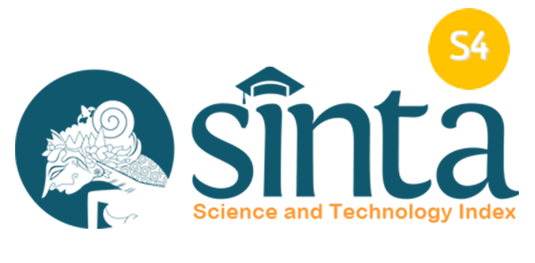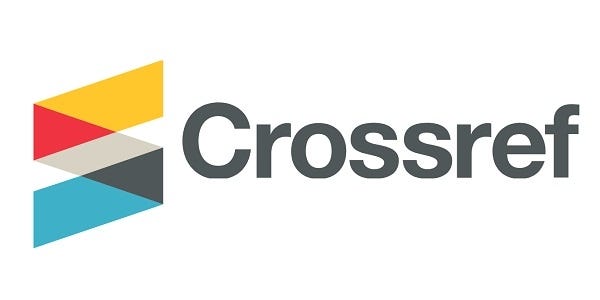Discourse Analysis on A Governments’ COVID-19 Protocols Video Titled “Social Distancing”
DOI:
https://doi.org/10.36663/tatefl.v4i1.495Keywords:
Discourse, Covid-19, Hidden Meaning, Three-dimensional modelAbstract
The use of discourse amid the COVID-19 era to provide information about COVID-19 among the people was inseparable. The related information about COVID-19 was needed at that time to eliminate misunderstanding however, the discourse given through video tended to deliver hidden intentions. The focus of the present study was to attempt to find and elaborate on the hidden intentions of the use of a foreign language that was able in a video on President Joko Widodo’s YouTube channel titled “Social Distancing”. The research method used in the present study was a Three-dimensional model from Fairclough that consisted of three steps of analysis, namely description, interpretation, and explanation. Data was acquired from President Joko Widodo’s YouTube channel and other related references and collected by using an observation sheet instrument that employed four collection steps, namely watching/reviewing, marking, collecting, and displaying. The study concluded that there was a tendency to support the use of the English language in social practice to support globalization in Indonesia shown by the use of English words within the video. According to the study results people recommended increasing their awareness to avoid misunderstanding certain information.
Downloads
References
Alfarisy, F. (2020). Kajian budaya: Kebijakan bahasa di tengah pandemi Covid-19. Anuva: Jurnal Kajian Budaya, Perpustakaan, dan Informasi, 4(3), 343-353. https://doi.org/10.14710/anuva.4.3.343-353 DOI: https://doi.org/10.14710/anuva.4.3.343-353
Assidik, G. K., & Santoso, B. W. J. (2016). Citra publik Presiden Republik Indonesia pada pemberitaan di harian Suara Merdeka, Tabloid Tempo, dan Harian Republika: Kajian analisis wacana kritis model Norman Fairclough. Seloka: Jurnal Pendidikan Bahasa Dan Sastra Indonesia, 5(2), 201-215. https://journal.unnes.ac.id/sju/seloka/article/view/13084
Cenderamata, R. C., & Darmayanti, N. (2019). Analisis wacana kritis Fairclough pada pemberitaan selebriti di media daring. Literasi: Jurnal Bahasa Dan Sastra Indonesia Serta Pembelajarannya, 3(1), 1-8. https://jurnal.unigal.ac.id/index.php/literasi/article/view/1736
Darma,Y. A. (2009). Analisis wacana kritis. Bandung: Yrama Widya
Fauzan, U. (2013). Analisis wacana kritis model Fairclough. Pendidik, 5(2), 209-217
Jiang, W. (2000). The relationship between culture and language. ELT Journal, 54(4), 328-334. https://doi.org/10.1093/elt/54.4.328 DOI: https://doi.org/10.1093/elt/54.4.328
Kramsch, C. (2014). Language and culture. AILA review, 27(1), 30-55. https://doi.org/10.1075/aila.27.02kra DOI: https://doi.org/10.1075/aila.27.02kra
Kridalaksana, H. (2008). Kamus linguistik (Edisi ke-4). Jakarta: Gramedia Pustaka Utama.
Mooney, A., & Evans, B. (2018). Language, society and power: An introduction. Routledge. DOI: https://doi.org/10.4324/9780429447006
Munfarida, E. (2014). Analisis wacana kritis dalam perspektif Norman Fairclough. KOMUNIKA: Jurnal Dakwah Dan Komunikasi, 8(1), 1-19. DOI: https://doi.org/10.24090/komunika.v8i1.746
Pennycook, A. (2009). English and globalization. In The Routledge companion to English language studies (pp. 125-133). Routledge.
Renandya, W. A., Hamied, F. A., & Nurkamto, J. (2018). English language proficiency in Indonesia: Issues and prospects. Journal of Asia TEFL, 15(3), 618. http://dx.doi.org/10.18823/asiatefl.2018.15.3.4.618 DOI: https://doi.org/10.18823/asiatefl.2018.15.3.4.618
Rintaningrum, R. (2015). Bahasa Inggris tidak perlu dihapus dari kurikulum 2013 sekolah dasar. In Proceeding Seminar Nasional ADPISI (Vol. 124, p. 133).
Santoso, B. (2006). Bahasa dan identitas budaya. Sabda: Jurnal Kajian Kebudayaan, 1(1), 44-49. DOI: https://doi.org/10.14710/sabda.v1i1.13266
Setiawan, D. (2018). Dampak perkembangan teknologi informasi dan komunikasi terhadap budaya. Jurnal Simbolika: Research and Learning in Communication Study, 4(1), 62-72. https://doi.org/10.31289/simbollika.v4i1.1474 DOI: https://doi.org/10.31289/simbollika.v4i1.1474
Downloads
Published
How to Cite
Issue
Section
License
Copyright (c) 2023 Ngurah Rama Aditya Putra

This work is licensed under a Creative Commons Attribution 4.0 International License.
License Terms
- Attribution — You must give appropriate credit, provide a link to the license, and indicate if changes were made. You may do so in any reasonable manner, but not in a way that suggests the licensor endorses you or your use.
- ShareAlike — If you remix, transform, or build upon the material, you must distribute your contributions under the same license as the original.
- No additional restrictions — You may not apply legal terms or technological measures that legally restrict others from doing anything the license permits.

















